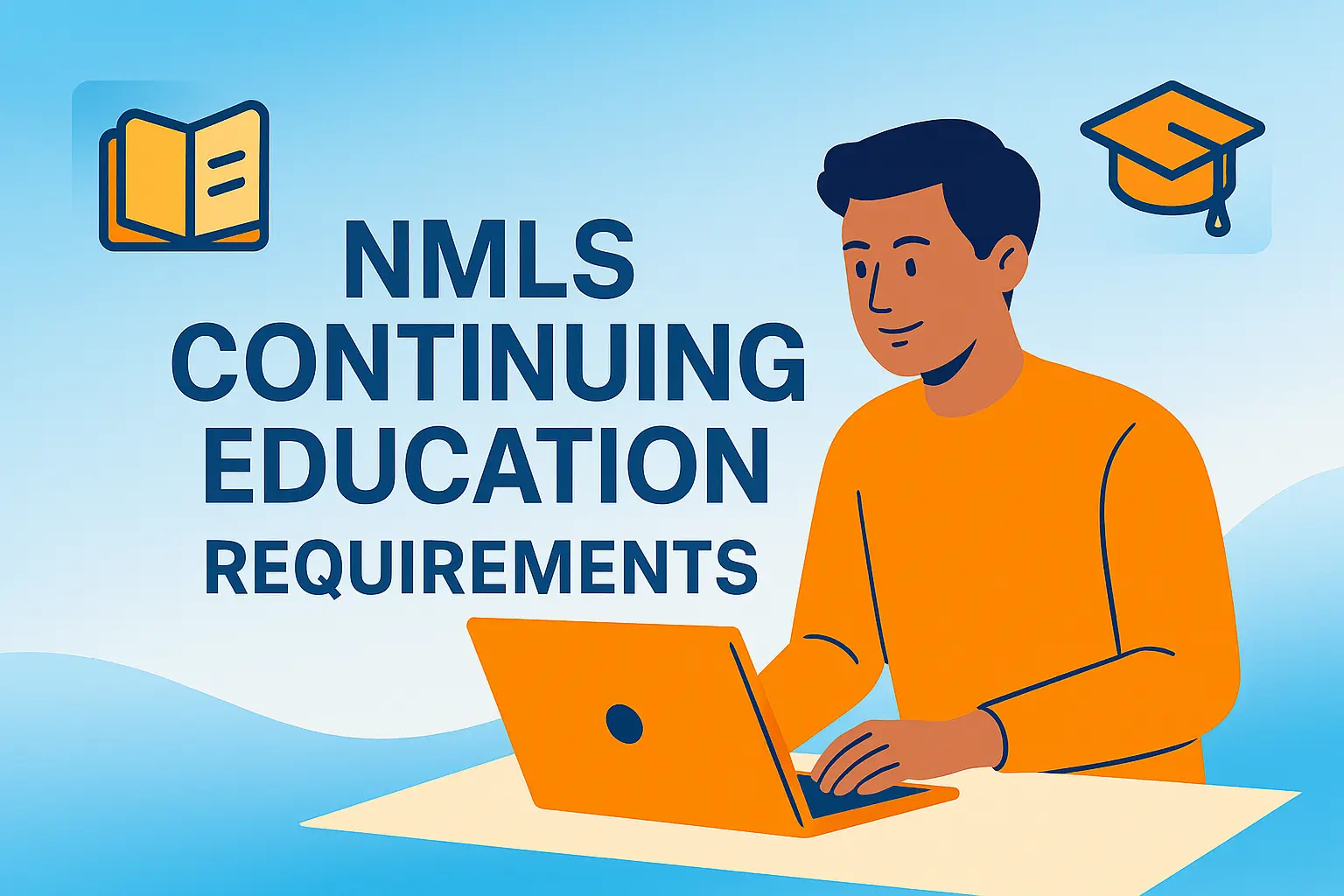If you’re a licensed mortgage loan originator (MLO), you’ve likely heard the phrase “NMLS continuing education” more times than you’d care to count. And yet, every year, thousands of MLOs scramble at the last minute to complete their CE hours. The result? Missed deadlines, inactive licenses, and a lot of unnecessary stress.
The truth is, staying compliant with NMLS continuing education doesn’t have to be complicated. Once you understand the basic rules, deadlines, and a few key tips, managing your CE each year becomes just another part of running your mortgage business smoothly. In this post, we’re breaking down the essentials—clearly and simply—so you can stay licensed, stay confident, and stay ahead.
What’s Required Annually?
Let’s start with the core rule: every state-licensed MLO is required to complete 8 hours of NMLS-approved continuing education (CE) each calendar year (some states require more hours).
These 8 hours aren’t just a block of generic training. They’re made up of four specific areas:
- 3 hours of federal law, where you’ll review and learn about key regulations like TILA, RESPA, and more.
- 2 hours of ethics, which include topics like fair lending, fraud prevention, and consumer protection.
- 2 hours of non-traditional mortgage lending, to keep you sharp on less conventional loan products.
- 1 hour of elective, which can vary—and in many cases, is state-specific.
Most CE providers package these into a single 8-hour course that checks all the boxes. So instead of piecing things together, you can usually take one class and be done for the year.
Mortgage CE Deadlines
The NMLS recommends completing your 2025 CE according to these renewal deadlines:
- SMART Deadline: December 5, 2025
- At-Risk-To-Miss Deadline: December 12, 2025
- Guaranteed To Miss Deadline: December 26, 2025
*Some states have earlier recommended deadlines.
Miss the deadline? Your license will become inactive on January 1, and you won’t be able to originate loans until it’s resolved. In some cases, that means completing a special “Late CE” course to get back on track.
Why This Matters More Than You Think
Beyond staying compliant, CE is about more than just ticking a box. It’s a legal requirement, yes—but it also keeps you updated on evolving regulations and practices. The mortgage world moves fast, and continuing education ensures you’re not just licensed, but truly prepared to serve your clients with the most current knowledge.
It’s also worth noting that state regulators take CE seriously. There have been enforcement actions against MLOs who’ve tried to cut corners, including having someone else complete coursework for them. The risk? Losing your license or facing disciplinary action—not worth it when CE is this manageable.
Final Thoughts: Don’t Wait
The best advice? Don’t wait until December. The earlier you complete your CE, the more breathing room you have—and the less chance of something slipping through the cracks.
With dozens of reliable providers and flexible course options (including mobile-friendly and self-paced formats), there’s really no reason to leave it to the last minute. And if you’re looking for a course that’s compliant, updated annually, and tailored to your state’s requirements, you can always start with Mortgage-Education.com.
